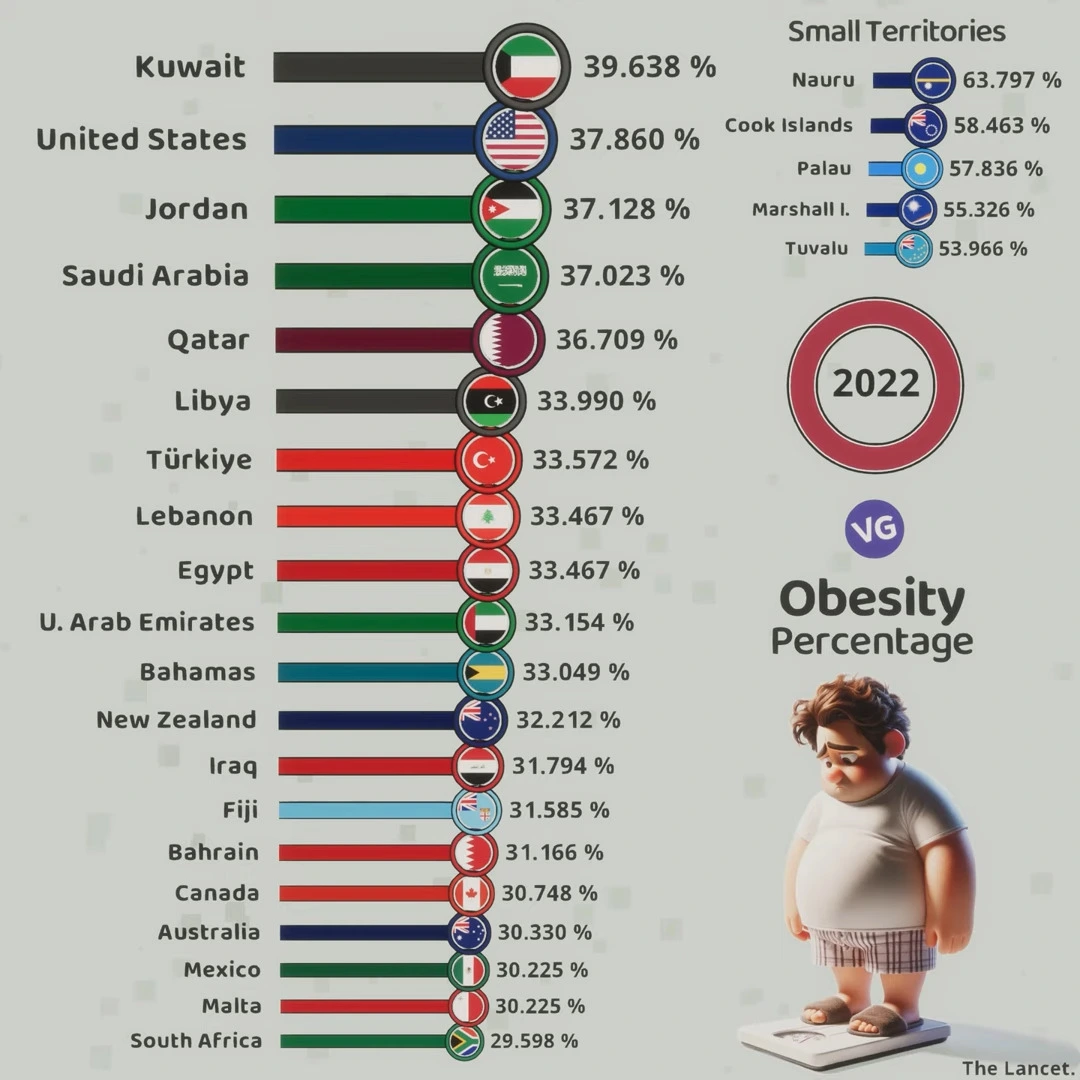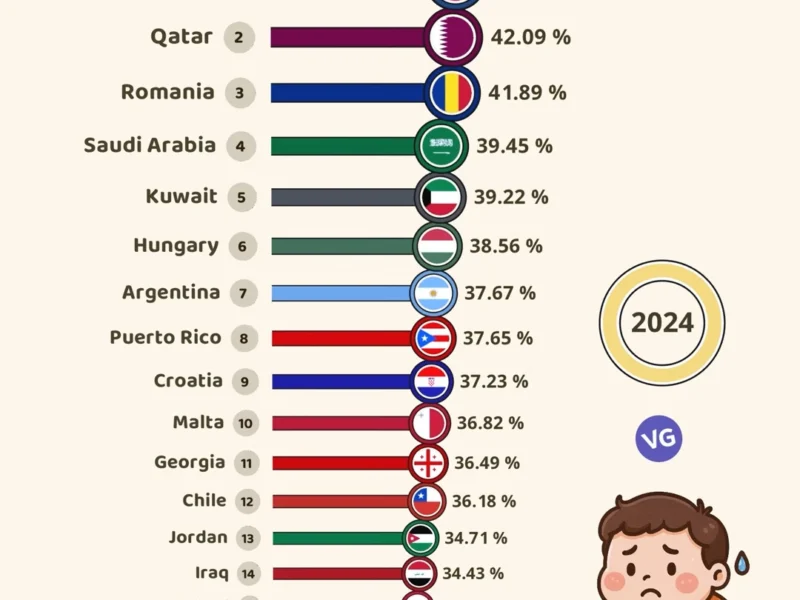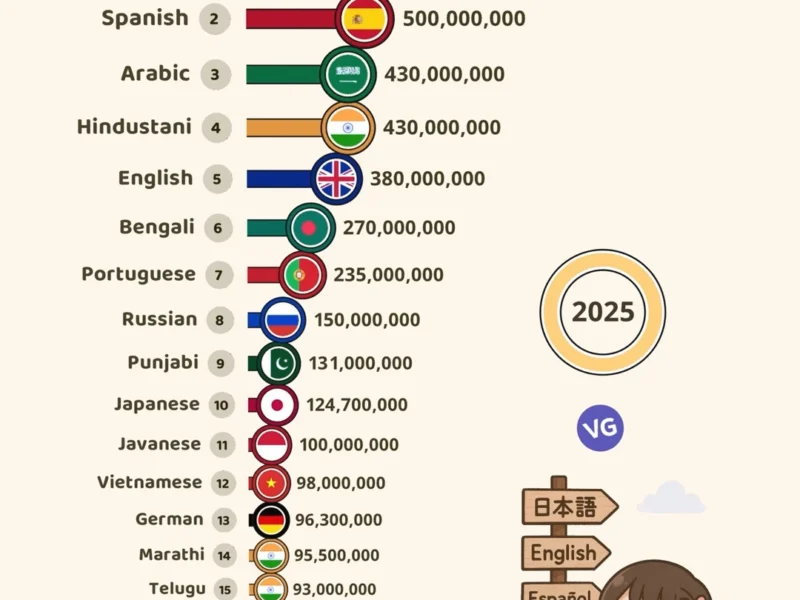The data from The Lancet presents a concerning snapshot of global obesity rates in 2022, revealing significant variations across different regions and highlighting particular challenges in both wealthy nations and small territories.
Top 10 Countries with the Highest Obesity Rates
| Rank | Country & Flag | Obesity Percentage |
|---|---|---|
| 1 | 🇰🇼 Kuwait | 39.638% |
| 2 | 🇺🇸 United States | 37.860% |
| 3 | 🇯🇴 Jordan | 37.128% |
| 4 | 🇸🇦 Saudi Arabia | 37.023% |
| 5 | 🇶🇦 Qatar | 36.709% |
| 6 | 🇱🇾 Libya | 33.990% |
| 7 | 🇹🇷 Türkiye | 33.572% |
| 8 | 🇱🇧 Lebanon | 33.467% |
| 9 | 🇪🇬 Egypt | 33.467% |
| 10 | 🇦🇪 United Arab Emirates | 33.154% |
| 11 | 🇧🇸 Bahamas | 33.049% |
| 12 | 🇳🇿 New Zealand | 32.212% |
| 13 | 🇮🇶 Iraq | 31.794% |
| 14 | 🇫🇯 Fiji | 31.585% |
| 15 | 🇧🇭 Bahrain | 31.166% |
| 16 | 🇨🇦 Canada | 30.748% |
| 17 | 🇦🇺 Australia | 30.330% |
| 18 | 🇲🇽 Mexico | 30.225% |
| 19 | 🇲🇹 Malta | 30.225% |
| 20 | 🇿🇦 South Africa | 29.598% |
Key Findings and Regional Patterns
Middle Eastern Dominance
Kuwait leads the main list with an alarming 39.638% obesity rate, followed closely by several other Middle Eastern nations. The region shows consistently high rates with:
- Kuwait: 39.638%
- Jordan: 37.128%
- Saudi Arabia: 37.023%
- Qatar: 36.709%
- UAE: 33.154%
Small Territories’ Crisis
Small Territories with Highest Obesity Rates
| Territory & Flag | Obesity Percentage |
|---|---|
| 🇳🇷 Nauru | 63.797% |
| 🇨🇰 Cook Islands | 58.463% |
| 🇵🇼 Palau | 57.836% |
| 🇲🇭 Marshall Islands | 55.326% |
| 🇹🇻 Tuvalu | 53.966% |
The data reveals particularly troubling statistics for small territories, with some of the highest obesity rates globally:
- Nauru: 63.797%
- Cook Islands: 58.463%
- Palau: 57.836%
- Marshall Islands: 55.326%
- Tuvalu: 53.966%
Western Nations
Developed Western nations show concerning rates as well:
- United States: 37.860%
- New Zealand: 32.212%
- Canada: 30.748%
- Australia: 30.330%
Contributing Factors
The high obesity rates across these nations likely stem from multiple factors:
- Economic prosperity leading to increased food availability
- Sedentary lifestyles common in developed nations
- Cultural dietary patterns
- Urbanization and reduced physical activity
- High consumption of processed foods
Regional Variations
The variation between regions is notable, with South Africa showing the lowest rate among listed countries at 29.598%. However, even this “lower” rate indicates that nearly one-third of the population is affected by obesity.
Pacific Island Crisis
The particularly high rates in Pacific Island nations (shown in the Small Territories section) reflect a complex interplay of factors including:
- Reliance on imported processed foods
- Cultural values regarding body size
- Limited resources for public health initiatives
- Economic challenges affecting food choices
This data from The Lancet underscores the global nature of the obesity crisis and the need for targeted interventions that consider local cultural, economic, and social factors. The variation between nations suggests that while obesity is a global challenge, solutions may need to be tailored to specific regional contexts.



